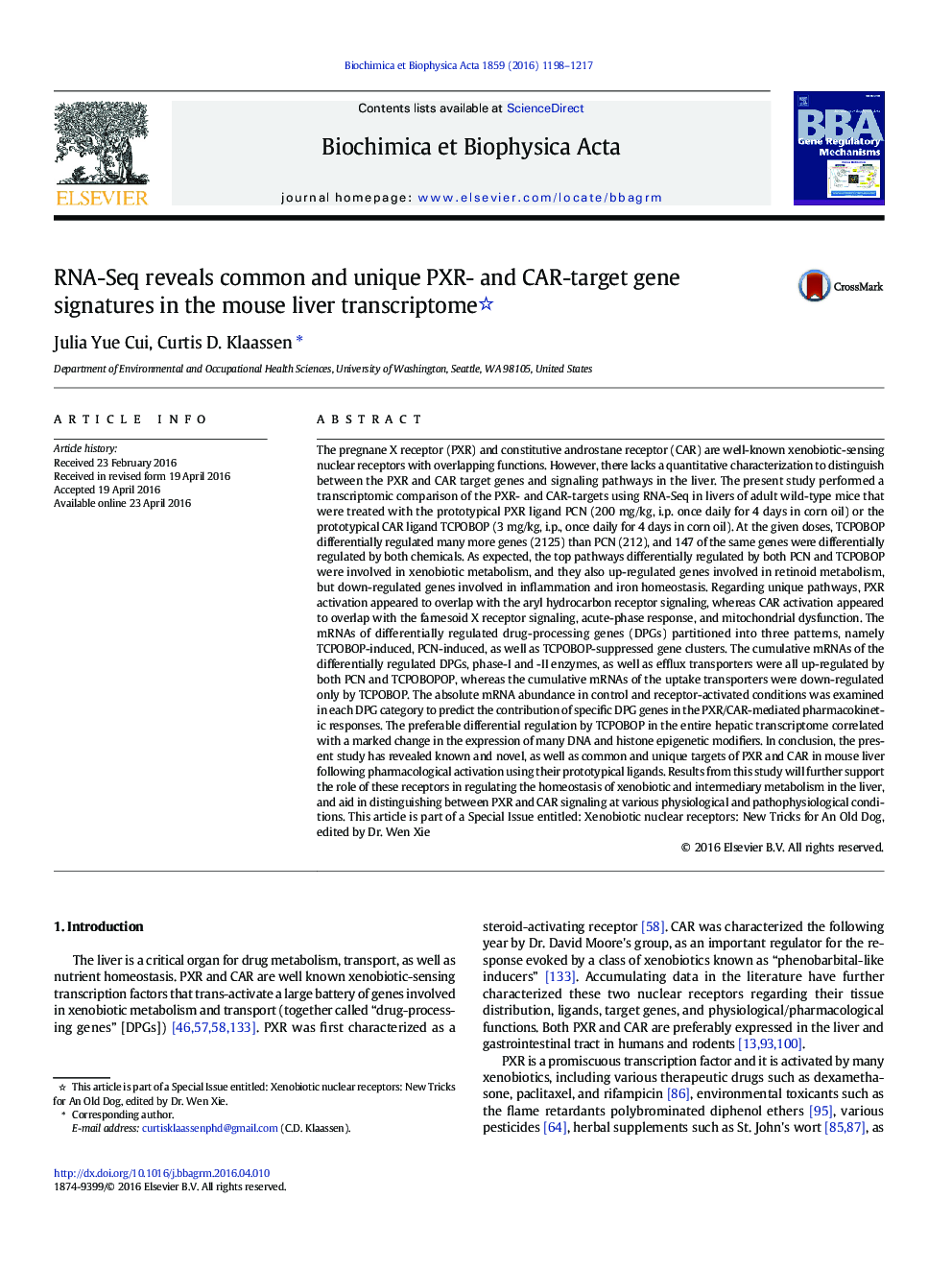| Article ID | Journal | Published Year | Pages | File Type |
|---|---|---|---|---|
| 1946306 | Biochimica et Biophysica Acta (BBA) - Gene Regulatory Mechanisms | 2016 | 20 Pages |
The pregnane X receptor (PXR) and constitutive androstane receptor (CAR) are well-known xenobiotic-sensing nuclear receptors with overlapping functions. However, there lacks a quantitative characterization to distinguish between the PXR and CAR target genes and signaling pathways in the liver. The present study performed a transcriptomic comparison of the PXR- and CAR-targets using RNA-Seq in livers of adult wild-type mice that were treated with the prototypical PXR ligand PCN (200 mg/kg, i.p. once daily for 4 days in corn oil) or the prototypical CAR ligand TCPOBOP (3 mg/kg, i.p., once daily for 4 days in corn oil). At the given doses, TCPOBOP differentially regulated many more genes (2125) than PCN (212), and 147 of the same genes were differentially regulated by both chemicals. As expected, the top pathways differentially regulated by both PCN and TCPOBOP were involved in xenobiotic metabolism, and they also up-regulated genes involved in retinoid metabolism, but down-regulated genes involved in inflammation and iron homeostasis. Regarding unique pathways, PXR activation appeared to overlap with the aryl hydrocarbon receptor signaling, whereas CAR activation appeared to overlap with the farnesoid X receptor signaling, acute-phase response, and mitochondrial dysfunction. The mRNAs of differentially regulated drug-processing genes (DPGs) partitioned into three patterns, namely TCPOBOP-induced, PCN-induced, as well as TCPOBOP-suppressed gene clusters. The cumulative mRNAs of the differentially regulated DPGs, phase-I and -II enzymes, as well as efflux transporters were all up-regulated by both PCN and TCPOBOPOP, whereas the cumulative mRNAs of the uptake transporters were down-regulated only by TCPOBOP. The absolute mRNA abundance in control and receptor-activated conditions was examined in each DPG category to predict the contribution of specific DPG genes in the PXR/CAR-mediated pharmacokinetic responses. The preferable differential regulation by TCPOBOP in the entire hepatic transcriptome correlated with a marked change in the expression of many DNA and histone epigenetic modifiers. In conclusion, the present study has revealed known and novel, as well as common and unique targets of PXR and CAR in mouse liver following pharmacological activation using their prototypical ligands. Results from this study will further support the role of these receptors in regulating the homeostasis of xenobiotic and intermediary metabolism in the liver, and aid in distinguishing between PXR and CAR signaling at various physiological and pathophysiological conditions. This article is part of a Special Issue entitled: Xenobiotic nuclear receptors: New Tricks for An Old Dog, edited by Dr. Wen Xie
